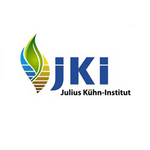Increasing resource efficiency and reducing nitrogen surpluses
Nitrogen (N) is an essential nutrient of crops. At the same time, the nitrogen released from agricultural soils through fertilisation acts as a greenhouse gas in the form of nitrous oxide (N2O). Therefore, reducing nitrogen surpluses contributes to climate protection. In addition, emissions occur during the production of synthetic fertilisers. The better the nitrogen supply is adapted to the plant demand, the lower the climate impact. According to greenhouse gas reporting, in 2020 49% of nitrogen supply to agriculture came from mineral fertilisers, 23% from domestic animal feed and 16% from feed imports. In 2020, the N surplus across all crops was around 80 kg/ha.
Scroll to top




